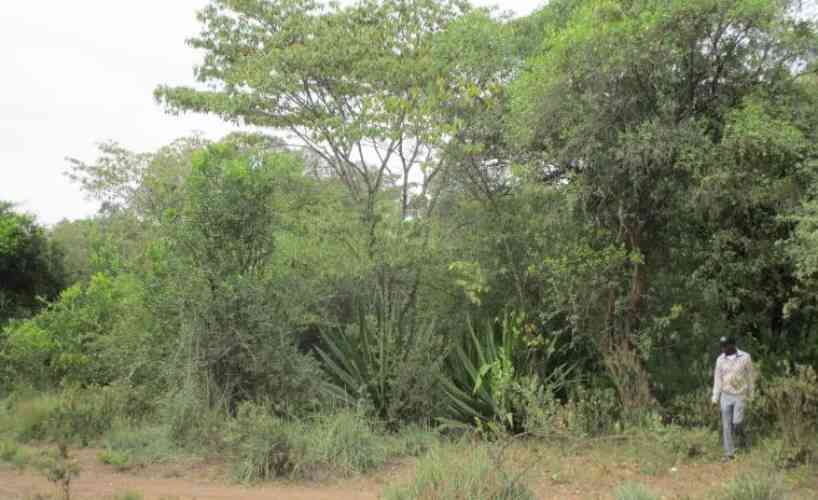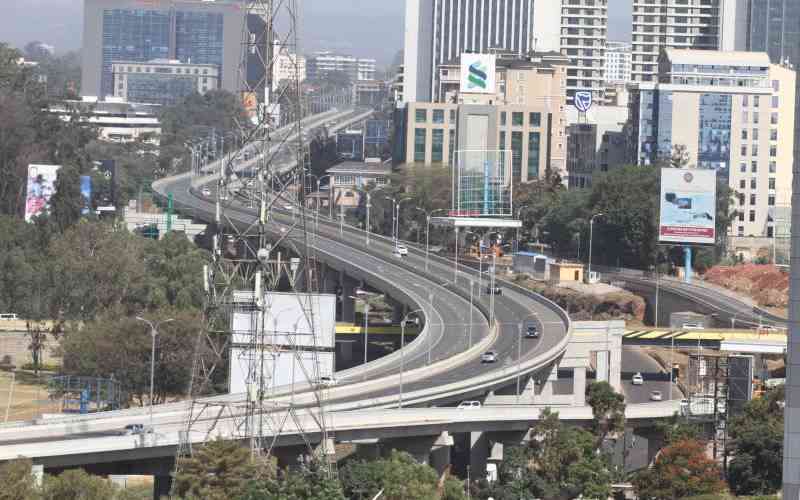
Jackson Ole Seki grazes his cows on the roadside along the Isinya-Kajiado road. With a staff on his hand, he nudges the herd away from the busy highway. It is three in the afternoon and he still has kilometres to cover on the way back home, deep inside Kisaju settlement. The ongoing drought has decimated his once formidable herd.
“Kiangazi itatumaliza hapa, (the drought is taking a toll on us),” he tells us. Despite having a 50-acre piece of land, he has kept to pastoralism, the traditional way of life for the dominant Maasai community here.
On the opposite side of the road is an upcoming housing estate. From the billboard erected next to the site, it is obvious that expected clientele are the middle to high income earners in society. A four bedroomed house here goes for Sh15 million. More than 50 per cent of the homes have been snapped up already.
The two scenarios describe the great economic divide in Kajiado County. At the heart of this rift is the county’s key resource — land. So emotive is the issue of land in Kajiado that it recently ignited national debate when Raila Odinga, Nasa presidential candidate was accused of inciting locals against the sale of land to perceived outsiders.
In a rejoinder, Raila said his comments were taken out of context stating that he was just urging the Maasai community to “ring fence lands in areas like Kajiado and Narok where most of the land, even when registered in the names of individuals, is held in trust for families and clans.” “We continue asking those who are registered as proprietors to stop selling land that they hold in trust. This is what we were urging in Kajiado. We told the proprietors that they must put the interests of the young Maasai people first because it is for them that they hold the land,” said Odinga in a media statement.
But what makes the issue of land in Kajiado such a hot topic? It should be noted that one cannot talk about land in Kajiado without referring to Nairobi City. As the city continued to grow, land within the city boundaries dwindled, forcing property developers and individuals to look for land farther afield.
Kiambu slowly gave up its coffee estates. The entry of multi-billion shillings projects such as Tatu City and Migaa set land prices on an upward trajectory. In Machakos County, Mlolongo and Athi River were also on developers’ radar.
But it was Kajiado that turned into a property developer’s playfield. The wide, open spaces akin to those in Laikipia became a hot cake to those looking for life outside the city.
The growth of satellite towns such as Ngong, Ongata Rongai, Kitengela and Isinya was largely fueled by the influx of people to this areas.
“This is no coincidence. Land in Kiambu became too expensive for ordinary people. It was only in Kajiado where speculators, individuals looking for land to build a family home, and Saccos could find huge tracts for subdivision,” says the Institution of Surveyors of Kenya chairperson Stephen Ambani.
The rush to acquire property in Kajiado – akin to the gold rush in South Africa – came with its own set of problems.
Under normal circumstances when land is adjudicated, the main registry map at the county offices needs to be updated to reflect the new owners. But this process, Ambani says, became Kajiado land’s Achilles heel.
“Owing to so many transactions at any one time, updating the registry map to reflect the new status became a nightmare. There have been numerous cases where someone would buy some land, go ahead to fence it only to find someone else who also ‘owns’ the same piece. Digitisation of registries is meant to avert such chaos,” says Ambani.
Adding insult to injury were unscrupulous brokers who took advantage of low levels of education among the local community to swindle them of their land. Stories are told where a person would give a local herder a pick-up truck in exchange for a huge tract of land that he would immediately transfer into his name.
Stay informed. Subscribe to our newsletter
Even some of the more educated members of the community who were officials in some group ranches used similar tactics to con rightful landowners of their property.
Such practices may have informed the move by the new county government of suspending land transaction for six months in September 2013. Still, some residents of Kajiado say land issues in the county are now being used as political weapons as each side claims to champion the rights of the local community.
Gideon Ole Naakuo from Kitengela says sale of land “did not start yesterday, neither is it coming to an end any time soon”.
According to Naakuo, Kiambu had thriving coffee farms but these are giving way to houses. The allure of Sh20-30 million an acre in some places in Kajiado is becoming irresistible to landowners in the county.
“The people of Kajiado have never had a problem with anybody buying land using the right procedures. In fact, those selling land now may not necessarily be the Maasai but are fifth or tenth owners of these pieces,” he says.
But the ‘land revolution’ in Kajiado is interfering with traditional norms for the largely pastoralist community.
Naakuo, who was born and raised in Kitengela says the remaining family land can no longer handle his 500 head of cattle.
He was forced to lease land in Voi to accommodate the herd. Selling the cows is out of question as, he says, it is his birthright.
 The Standard Group Plc is a
multi-media organization with investments in media platforms spanning newspaper
print operations, television, radio broadcasting, digital and online services. The
Standard Group is recognized as a leading multi-media house in Kenya with a key
influence in matters of national and international interest.
The Standard Group Plc is a
multi-media organization with investments in media platforms spanning newspaper
print operations, television, radio broadcasting, digital and online services. The
Standard Group is recognized as a leading multi-media house in Kenya with a key
influence in matters of national and international interest.
 The Standard Group Plc is a
multi-media organization with investments in media platforms spanning newspaper
print operations, television, radio broadcasting, digital and online services. The
Standard Group is recognized as a leading multi-media house in Kenya with a key
influence in matters of national and international interest.
The Standard Group Plc is a
multi-media organization with investments in media platforms spanning newspaper
print operations, television, radio broadcasting, digital and online services. The
Standard Group is recognized as a leading multi-media house in Kenya with a key
influence in matters of national and international interest.









